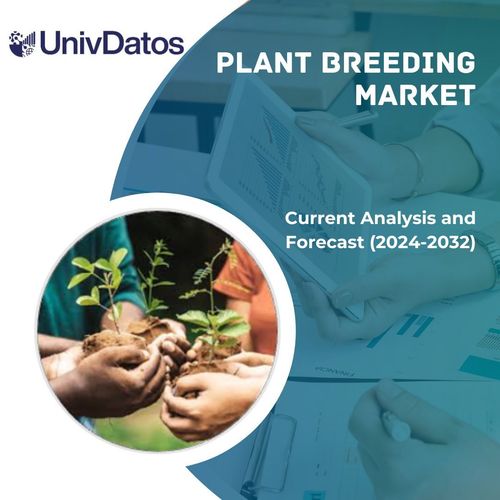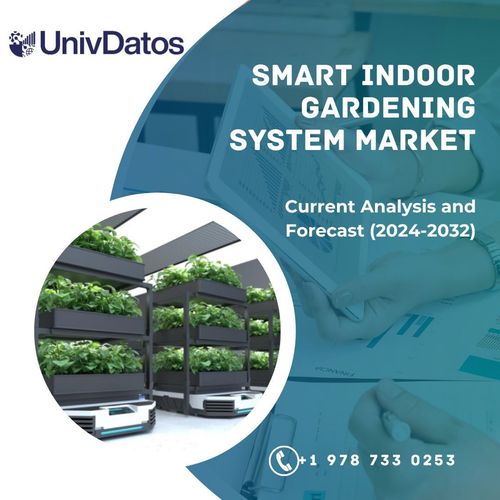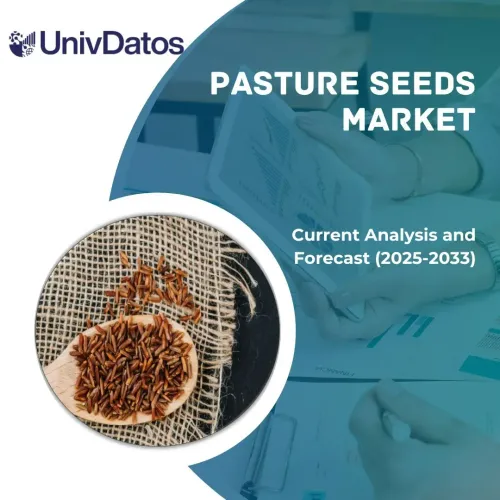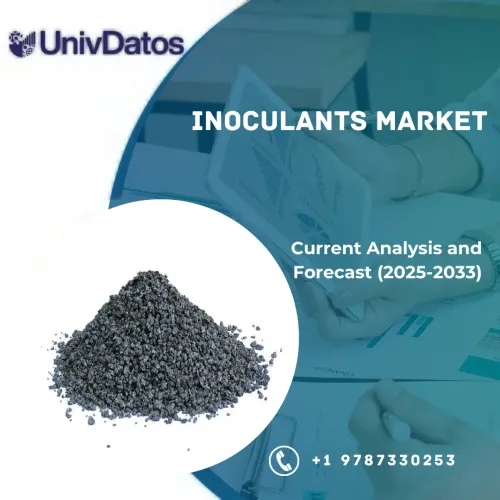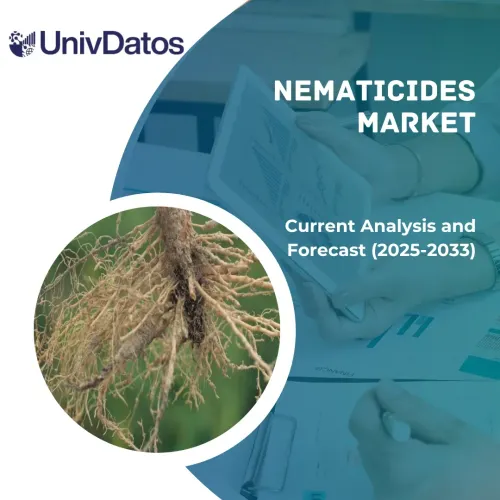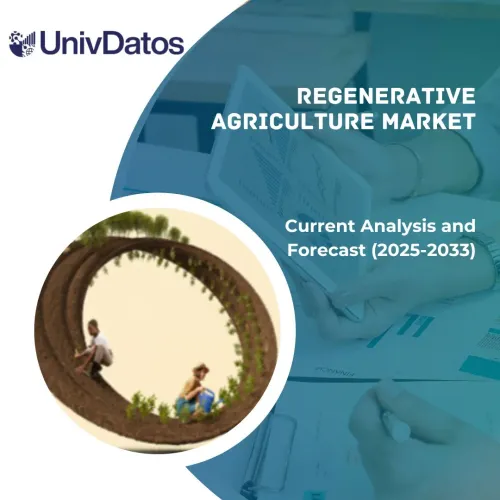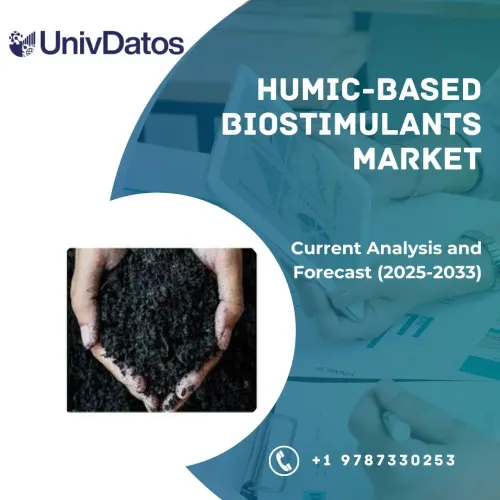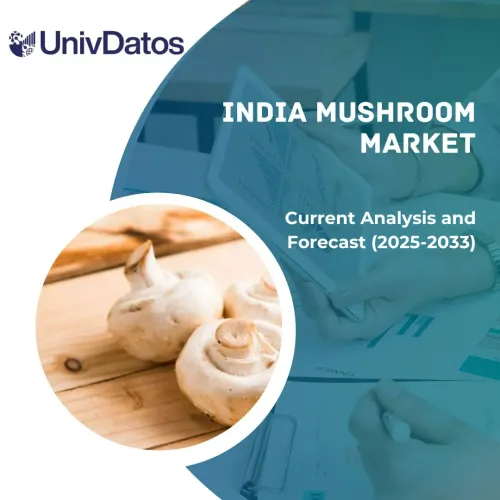- Home
- About Us
- Industry
- Services
- Reading
- Contact Us
Inoculants Market: Current Analysis and Forecast (2025-2033)
Emphasis on Microbe (Fungal, Bacterial, and Others); Form (Dry and Liquid); Application (Agricultural Inoculant, Silage Inoculant, and Others); and Region/Country

Global Inoculants Market Size & Forecast
The Global Inoculants Market was valued at USD 1,266.35 million in 2024 and is expected to grow at a strong CAGR of around 8.3% during the forecast period (2025-2033F). This growth is driven by the rising demand for sustainable and eco-friendly agricultural inputs that enhance soil fertility and crop productivity while reducing dependence on chemical fertilizers.
Inoculants Market Analysis
Inoculants contain useful microorganisms (bacteria, fungi, and algae) and are used in the soil, plants, or other environments to stimulate growth, increase nutrients, and improve general health. Several factors are driving the growth of the inoculants market. Government programs that promote organic farming and environmental conservation, combined with increased awareness among farmers about the benefits of inoculants, are driving market growth. Furthermore, microbial biotechnology has also advanced, resulting in more effective and targeted inoculant formulations, which have increased the demand for inoculants.
Global Inoculants Market Trends
This section discusses the key market trends that are influencing the various segments of the global inoculants market, as found by our team of research experts.
Shift toward Liquid and Encapsulated Inoculant Formulations
The transition to liquid and encapsulated inoculant formulations is a major trend emerging in the inoculants market. Liquid formulations offer better stability, longer shelf life, and easier application. These preparations provide homogenous seed coating and enhanced microbial viability, and encapsulated inoculants safeguard microorganisms against adverse environmental conditions and enable them to be released into the soil in a controlled manner. These new formulations enhance better nutrient absorption and crop yields, which are more desirable to the farmers. Moreover, the precision solutions of these types of inoculants are increasingly used in multiple crop and soil environments worldwide as a result of technological advancements in formulation science and increasing market demand.
Inoculants Industry Segmentation
This section provides an analysis of the key trends in each segment of the global inoculants market report, along with forecasts at the global, regional, and country levels for 2025-2033.
The Bacterial Inoculants Market Dominates the Global Inoculants Market
Based on the microbe category, the market is categorised into fungal, bacterial, and others. Among these, the bacterial inoculants market currently holds the largest market share because they are extensively used in farming, with nitrogen-fixing bacteria like Rhizobium, Azospirillum, and Azotobacter proving to be more productive in improving the soils and crops. However, the fungal inoculants market is expected to witness the fastest growth in the coming years, due to growing use in organic agriculture, better formulations, and the capability to increase nutrient uptake and resilience in plants under varied environmental conditions.
The Agricultural Inoculant Market Dominates the Global Inoculants Market.
Based on the application category, the market is segmented into agricultural inoculant, silage inoculant, and others. Among these, the agricultural inoculant market holds the largest market share, because it is used extensively to improve soil fertility, nutrient availability, and crop productivity in a broad variety of crops. Farmers are increasingly using agricultural inoculants, including seed and soil preparations, to minimize the use of chemical fertilizers and encourage sustainable farming. However, the silage inoculant market is projected to grow significantly in the coming years, driven by the growing need to produce high-quality livestock food, the overall growth of dairy and livestock markets, and the rising awareness of the benefits of silage preservation that enhance the digestibility and nutritional value of feed in cattle.
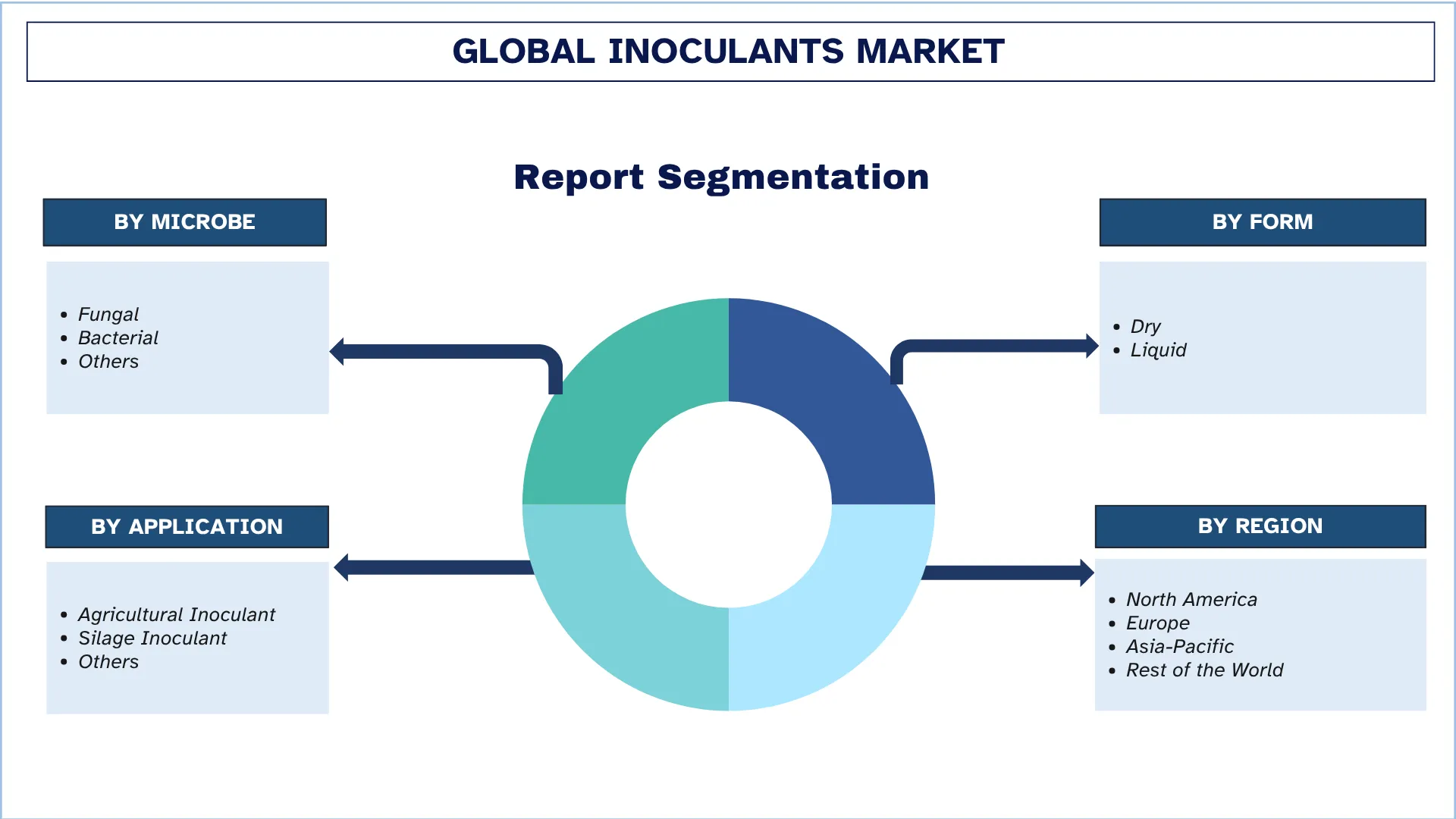
North America holds the largest market share in the global Inoculants market
North America is the leading market share holder in the inoculants market due to its established agricultural sector, advanced farming technologies, and practices, as well as the use of sustainable crop enhancement technologies. Inoculants have been in high demand in the region due to the emphasis on precision farming and improved awareness regarding soil health management. Additionally, market dominance is facilitated by increased research and development activities, favourable government policies that support the use of biofertilizers, and the presence of several key market players in the region.
The United States held a Dominant share of the North America Inoculants Market in 2024
The United States dominated the North American inoculants market because of its extensive commercial farm production and its powerful investment in agricultural innovation. The advanced microbial solutions have been adopted rapidly in the country due to the strong research infrastructure, which has been facilitated by the partnership of businesses, government bodies, and Universities. The growth in the market has been further stimulated by increasing awareness among farmers regarding the benefits of bio-based inputs to enhance the fertility of soils and crop yields. Also, desirable regulatory policies, increased demand for organic foods, and the extensive cultivation of legumes and cereal crops have put the U.S. at the forefront as a market leader in inoculants.
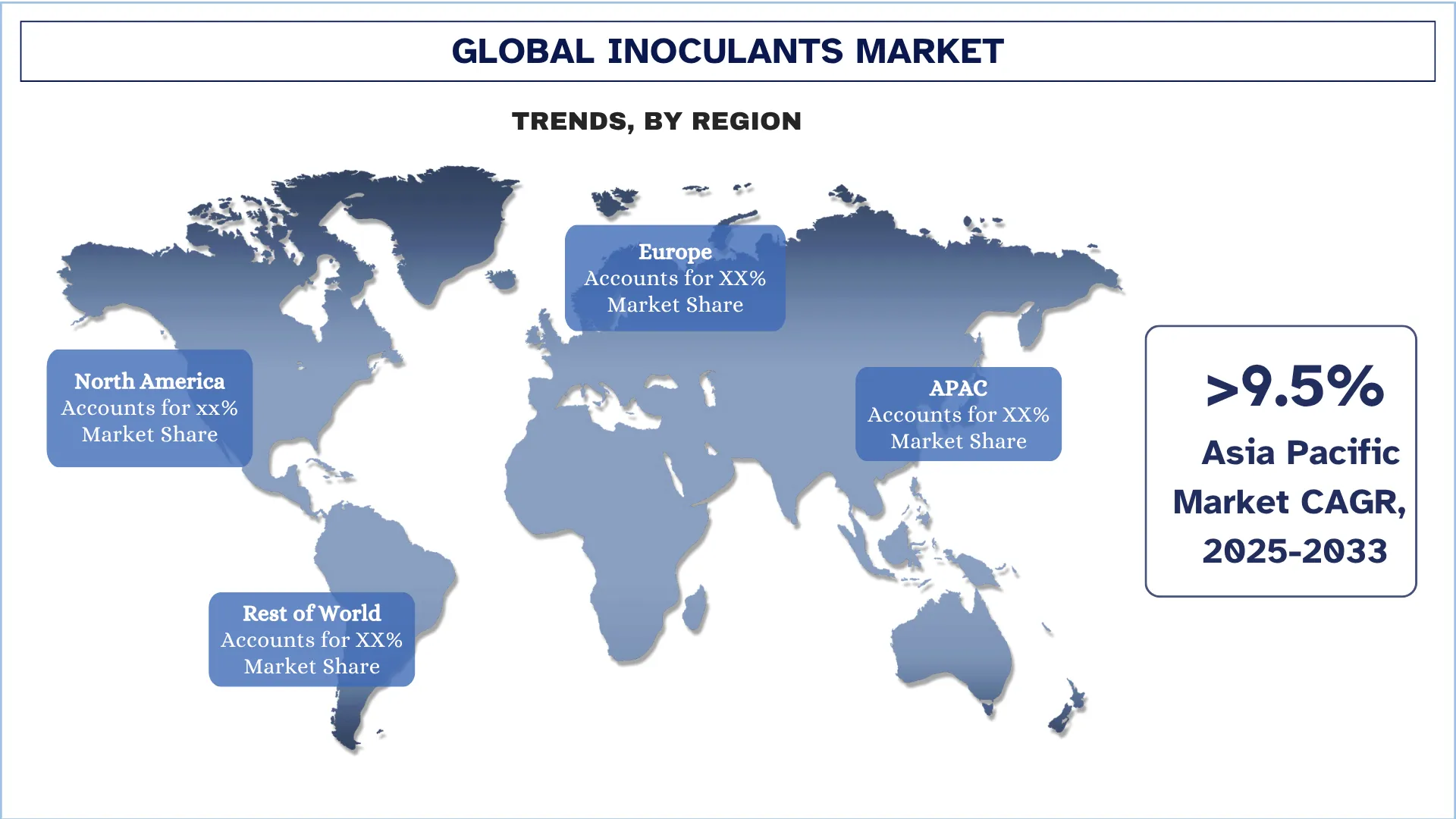
Inoculants Industry Competitive Landscape
The global inoculants market is competitive, with several global and international market players. The key players are adopting different growth strategies to enhance their market presence, such as partnerships, agreements, collaborations, geographical expansions, and mergers and acquisitions.
Top Inoculants Market Companies
Some of the major players in the market are BASF SE, Bayer AG, Novozymes A/S (Novonesis Group), American Vanguard Corporation, Lallemand Inc., UPL, Corteva Agriscience, Kemin Industries Inc., Verdesian Life Sciences, and BIO-CAT.
Recent Developments in the Inoculants Market
In June 2025, ProGro BIO pursued U.S. EPA approval for a new line of organic biocontrol inoculants aimed at combating soil and foliar fungal pathogens, parasitic nematodes, and foliar insects through microbial-based formulations.
In September 2024, Syngenta Canada entered the inoculant market by launching its Atuva family of pulse and soybean inoculants, offering both peat-based granular and all-in-one liquid formulations.
In March 2024, EW Nutrition acquired the BIOSTABIL silage inoculant product line from DSM-Firmenich, thereby gaining control of an established biological solution portfolio.
Global Inoculants Market Report Coverage
Report Attribute | Details |
Base year | 2024 |
Forecast period | 2025-2033 |
Growth momentum | Accelerate at a CAGR of 8.3% |
Market size 2024 | USD 1,266.35 million |
Regional analysis | North America, Europe, APAC, Rest of the World |
Major contributing region | The Asia-Pacific region is expected to dominate the market during the forecast period. |
Key countries covered | U.S., Canada, Germany, U.K., Spain, Italy, France, China, Japan, and India. |
Companies profiled | BASF SE, Bayer AG, Novozymes A/S (Novonesis Group), American Vanguard Corporation, Lallemand Inc., UPL, Corteva Agriscience, Kemin Industries Inc., Verdesian Life Sciences, and BIO-CAT. |
Report Scope | Market Trends, Drivers, and Restraints; Revenue Estimation and Forecast; Segmentation Analysis; Demand and Supply Side Analysis; Competitive Landscape; Company Profiling |
Segments Covered | By Microbe, By Form, By Application, and By Region/Country |
Reasons to Buy the Inoculants Market Report:
The study includes market sizing and forecasting analysis confirmed by authenticated key industry experts.
The report briefly reviews overall industry performance at a glance.
The report covers an in-depth analysis of prominent industry peers, primarily focusing on key business financials, type portfolios, expansion strategies, and recent developments.
Detailed examination of drivers, restraints, key trends, and opportunities prevailing in the industry.
The study comprehensively covers the market across different segments.
Deep dive regional level analysis of the industry.
Customization Options:
The global Inoculants market can further be customized as per the requirements or any other market segment. Besides this, UnivDatos understands that you may have your own business needs; hence, feel free to contact us to get a report that completely suits your requirements.
Table of Content
Research Methodology for the Global Inoculants Market Analysis (2023-2033)
We analyzed the historical market, estimated the current market, and forecasted the future market of the global inoculants market to assess its application in major regions worldwide. We conducted exhaustive secondary research to gather historical market data and estimate the current market size. To validate these insights, we carefully reviewed numerous findings and assumptions. Additionally, we conducted in-depth primary interviews with industry experts across the inoculants value chain. After validating market figures through these interviews, we used both top-down and bottom-up approaches to forecast the overall market size. We then employed market breakdown and data triangulation methods to estimate and analyze the market size of industry segments and sub-segments.
Market Engineering
We employed the data triangulation technique to finalize the overall market estimation and derive precise statistical numbers for each segment and sub-segment of the global inoculants market. We split the data into several segments and sub-segments by analyzing various parameters and trends, including microbe, form, application, and regions within the global inoculants market.
The Main Objective of the Global Inoculants Market Study
The study identifies current and future trends in the global inoculants market, providing strategic insights for investors. It highlights regional market attractiveness, enabling industry participants to tap into untapped markets and gain a first-mover advantage. Other quantitative goals of the studies include:
Market Size Analysis: Assess the current and forecast market size of the global inoculants market and its segments in terms of value (USD).
Inoculants Market Segmentation: Segments in the study include areas of microbe, form, application, and region.
Regulatory Framework & Value Chain Analysis: Examine the regulatory framework, value chain, customer behavior, and competitive landscape of the inoculants industry.
Regional Analysis: Conduct a detailed regional analysis for key areas such as Asia Pacific, Europe, North America, and the Rest of the World.
Company Profiles & Growth Strategies: Company profiles of the inoculants market and the growth strategies adopted by the market players to sustain the fast-growing market.
Frequently Asked Questions FAQs
Q1: What is the global Inoculants market’s current market size and growth potential?
As of 2024, the global inoculants market size is estimated at USD 1,266.35 million. The market is projected to grow at a robust CAGR of 8.3% from 2025 to 2033, driven by increasing adoption of bio-based agricultural inputs and rising demand for sustainable farming solutions worldwide.
Q2: Which segment has the largest share of the global inoculants market by microbe category?
The bacterial inoculants segment holds the largest market share in the global inoculants market. These inoculants are widely used due to their ability to improve soil fertility, promote nutrient uptake, and enhance crop yields across diverse agricultural systems.
Q3: What are the driving factors for the growth of the global inoculants market?
Top growth drivers of the inoculants market include:
• Rising demand for sustainable and eco-friendly agricultural inputs
• Increasing awareness of soil health
• Growing adoption of organic and precision farming practices worldwide.
Q4: What are the emerging technologies and trends in the global inoculants market?
Emerging trends in the inoculants market include:
• Shift toward liquid and encapsulated inoculant formulations
• Rising focus on biological seed treatments as part of integrated crop management.
Q5: What are the key challenges in the global inoculants market?
Key challenges in the inoculants market include:
• Lack of awareness among farmers
• Regulatory complexities and absence of standardized global biofertilizer frameworks.
Q6: Which region dominates the global inoculants market?
North America dominates the global inoculants market due to its advanced agricultural infrastructure, high adoption of biological crop inputs, and supportive government policies promoting sustainable and precision farming practices.
Q7: Who are the key competitors in the global inoculants market?
Top players in the inoculants industry include:
• BASF SE
• Bayer AG
• Novozymes A/S (Novonesis Group)
• American Vanguard Corporation
• Lallemand Inc.
• UPL
• Corteva Agriscience
• Kemin Industries, Inc.
• Verdesian Life Sciences
• BIO-CAT
Q8: What are the major investment opportunities in the global inoculants market?
The inoculants market presents strong investment opportunities in advanced microbial formulations, bio-based crop enhancement technologies, and precision agriculture solutions. Increasing regulatory approvals, supportive government policies, and the global push toward sustainable farming are creating attractive avenues for investors and agri-tech companies.
Q9: How are strategic collaborations and R&D initiatives shaping the future of the inoculants market?
Strategic collaborations between agri-biotech firms, research institutions, and government bodies are accelerating R&D in inoculant innovation. These partnerships are leading to the development of high-performance microbial strains, improved delivery systems, and expanded applications across diverse crops and geographies, driving long-term market competitiveness and profitability.
Related Reports
Customers who bought this item also bought



